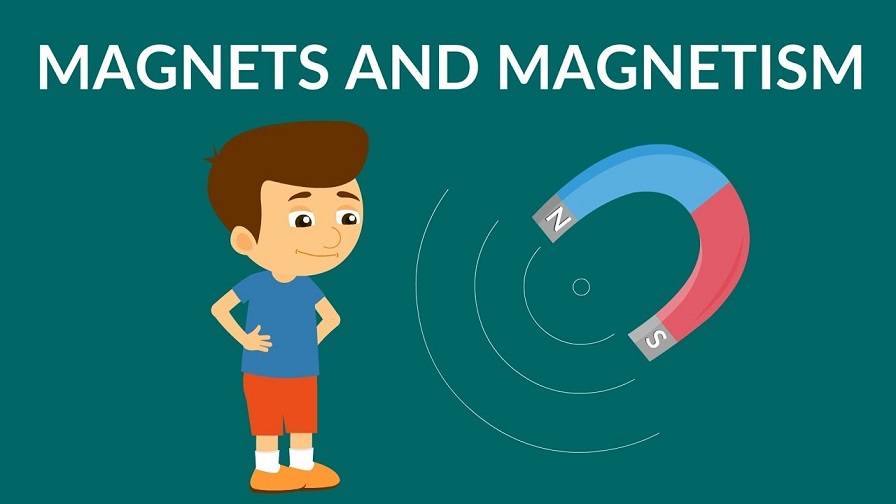Common Sense of Magnets
As we all know, magnets are very useful in our daily life. To let those who are new to the world of magnets have a better understanding of them, in this article, we'll introduce some common sense of magnets.
 Common Sense of Magnets
Common Sense of Magnets
A Brief History of Magnets
The ancient Greeks and Chinese discovered a naturally magnetized rock in nature and called it a "magnet". Artificial magnets appeared in the 18th century, but the process of manufacturing stronger magnetic materials was very slow until the AlNiCo magnet was manufactured in the 1920s. Subsequently, ferrite magnet was manufactured in the 1950s, and rare earth magnets were manufactured in the 1970s. A rare earth magnet includes a neodymium iron boron (NdFeB) magnet and a samarium cobalt (SmCo) magnet.
What is the direction of magnetization?
Most magnets can be magnetized to saturation in the same direction, which is called the "magnetization direction". A magnet without a magnetization direction is much weaker than a magnet with a magnetization direction.
How to identify the north pole of a magnet without marking?
Obviously, the south pole and the north pole of a magnet cannot be distinguished by eyes alone. You can use the compass to get close to the magnet, and the pointer to the north pole of the earth will point to the south pole of the magnet.
How to handle and store magnets safely?
Always be very careful when handling and storing magnets, as the magnets will stick together by themselves and may pinch your fingers. When the magnets are attracted to each other, the magnet itself may be damaged due to collision. Keep magnets away from items that are easily magnetized, such as floppy disks, credit cards, computer monitors, watches, mobile phones, medical equipment, etc. For example, the magnet should be far away from the pacemaker. For larger magnets, plastic or hard paper spacers should be added between each piece to ensure that the magnets can be easily separated. In addition, magnets should be stored in a dry, constant-temperature environment as much as possible.
How to achieve magnetic isolation?
Only the material that can be adsorbed to the magnet can cut off the magnetic field, and the thicker the material, the better the magnetic shielding effect.
What is the strongest magnet?
At present, the highest performance magnets are rare earth magnets, among which neodymium iron boron magnets are the most powerful magnets. But in an environment above 200 degrees Celsius, samarium cobalt magnets are the strongest magnets.
Types of Magnets
Magnets are mainly divided into two categories, one is the soft magnet and the other is the hard magnet. Soft magnets include silicon steel sheets and soft magnetic cores. Hard magnets include AlNiCo, samarium cobalt, ferrite, and neodymium iron boron magnets. Among them, the most expensive is the samarium cobalt magnet, the cheapest is the ferrite magnet, and the highest performance is the neodymium iron boron magnet. However, the most stable performance and the best temperature coefficient is the AlNiCo magnet. Users can choose different hard magnet products according to their different needs.
How to define the performance of a magnet?
There are mainly the following 3 performance parameters to determine the performance of the magnet:
Remanence Br
After the permanent magnet is magnetized to technical saturation and the external magnetic field is removed, the remaining magnetic induction intensity is called remanence Br.
Coercivity Hc
To reduce the B of the permanent magnet that is magnetized to technical saturation to zero, the strength of the reverse magnetic field that needs to be added is called magnetic coercive force, or coercivity Hc for short.
Magnetic Energy Product BH
It represents the magnetic energy density established by the magnet in the air gap space (the space between the two magnetic poles of the magnet), that is, the magnetostatic energy per unit volume of the air gap. Since this energy is equal to the product of the magnet's Bm and Hm, it is called the magnetic energy product.
What is a magnetic field?
The space that produces a magnetic effect on the magnetic poles is a magnetic field.
What is the surface magnetic field?
It refers to the magnetic induction intensity at a specified position on the surface of the permanent magnet.
Conclusion
Thank you for reading our article and we hope it can help you to have a better understanding of the common sense of magnets. If you want to find more information about magnets, we would like to advise you to visit Stanford Magnets. As a leading magnet supplier across the world, Stanford Magnets has been involved in R&D, manufacturing, and sales of magnets since the 1990s. It provides customers with high-quality permanent magnets like neodymium magnets, SmCo magnets, AlNiCo magnets, and ferrite magnets (ceramic magnets) at a very competitive price.














